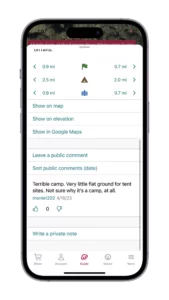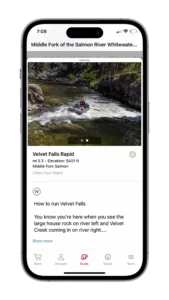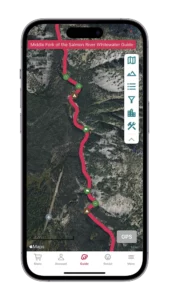About Pungo Camp
According to “Semantic Change in Shoshone-Comanche, 1800-1900” the word “pungo” is Shoshone for horse. This camp has Sheepeater Indian house pits and is a culturally sensitive area. USFS archaeological excavations showed: “…the depression was verified as a house pit by the presence of a central fire pit and by a concentration of artifacts on the floor of the living surface…” A much earlier USFS report wrote that these groupings of house pits were “…generally associated with hot springs, large open second level terraces, and/or possible river fords.” With the exception of a hotspring, Pungo fits this description well.
Pungo has a beautiful creek just upriver from the camping area. There’s also a mine located behind the camp and up the scree. The mine followed a fluorspar vein, which is used to manufacture products such as aluminum, gasoline, insulating foams, refrigerants, steel, and uranium fuel. The cost of extracting the fluorspar never panned out though and it eventually was abandoned.
This camp has shade, plenty of tent sites and overall, is very pretty. The rapid downstream can be easily seen and offers entertainment if you’re lucky enough to be here when another group floats by with duckies. If there’s a fisherman in the group, row them across the river and work the pool against the river right cliff wall. This is a great fishing hole.
Sources
- Shaul, D. L. (1981). Semantic Change in Shoshone-Comanche, 1800-1900. Anthropological Linguistics, 23(8), 344–355. http://www.jstor.org/stable/30027871
- Middle Fork Heritage Times. https://www.fs.usda.gov/Internet/FSE_DOCUMENTS/fsbdev3_029427.pdf
- A Cultural Resource Reconnaissance in the Middle Fork Salmon River Basin, Idaho, 1978. http://npshistory.com/publications/usfs/region/4/salmon/cultres7.pdf
- Carrey, J., & Conley, C. (1992). Pungo. In The Middle Fork: A guide. essay, Backeddy Books.




